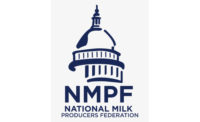Unfortunately, price and sales run inversely-price goes up a lot and sales go down a lot; prices go down a little and sales go up a very little. Many of our best customers-families with several kids-just simply don't think they can afford milk any longer; certainly not as much as they once could.
The numbers tell the sad story. Sales peaked in the early 1990s when we sold 55 billion pounds of beverage milk. Last year, we sold about 54 billion pounds. That's a 2% decline to total sales.
The per capita numbers are a whole lot scarier. Fifteen years ago, per capita usage was about 220 pounds; last year, just over 180 pounds. That's a 15% decline.
How do we stem the decline? I see one very large challenge and two really sweet opportunities. There are many more of both, challenges and opportunities, but solving them will yield gallons of growth; long-term, sustainable growth.
The challenge: Taking the gyrations out of milk prices. The opportunities: Getting milk on more foodservice menus and getting kids to drink more milk in schools.
Taking the gyrations out of milk prices will be no easy task. Milk producers and their cooperatives will fall on their swords to defend classified pricing. The troops are being rallied now to define how milk used in dairy beverages should be priced.
I have a couple of suggestions:
1. Please listen very carefully to what your customers and consumers have to say. Take at least a few steps toward creating a pricing mechanism that allows innovative beverage makers to meet the needs and demands of a new marketplace and a new consumer.
2. Take "Class I" milk prices and cheese prices to divorce court.
The opportunities-foodservice and schools-are hugely exciting and already proven.
Milk producers, via Dairy Management Inc, have already demonstrated that milk sales can be dramatically increased in quick-service restaurants and schools. It's not necessarily easy, but it can be done. The data are proving it.
Last summer, at the urging of DMI, Wendy's and McDonald's launched milk-both white and chocolate-in plastic re-sealable bottles. Sales shot up. Sales weren't sustained at the launch levels, but they were several times greater than earlier, and by the fourth quarter of last year foodservice milk sales were two to three percentage points above year-earlier levels even as retail milk sales sagged. All we need now are more plastic bottles full of milk in more fast-food chains.
The marketplace has changed. Obesity, especially among children, is a hot topic. Foodservice operators need to demonstrate that they are socially responsible and milk helps them deliver a better health and nutrition profile.
Ditto for school lunch lines. Social and political pressure is mounting for better nutrition; less sugar and less caffeine. DMI and state and regional promotion units have sponsored research demonstrating that milk in plastic bottles, served nice and cold, drives usage higher.
Out of this research, DMI has created a program called "New Look for School Milk." The program is gaining traction and selling more milk, but more proponents are needed; dairy processor proponents willing to deliver milk in plastic and willing to deal with other issues like recycling.
Both efforts-foodservice and schools-mean improved milk sales today and into the future as children grow up confirmed milk drinkers. Just take a look at the yogurt business. Faced with flattening sales, the launch of a host of products targeted at kids has the category growing at a rate of 10% a year.
Let's listen to our customers and consumers and fix the pricing mess. Let's aggressively put milk in front of our customers and consumers where they want it and in the package they want.
I'm feeling very optimistic again. How about you?
